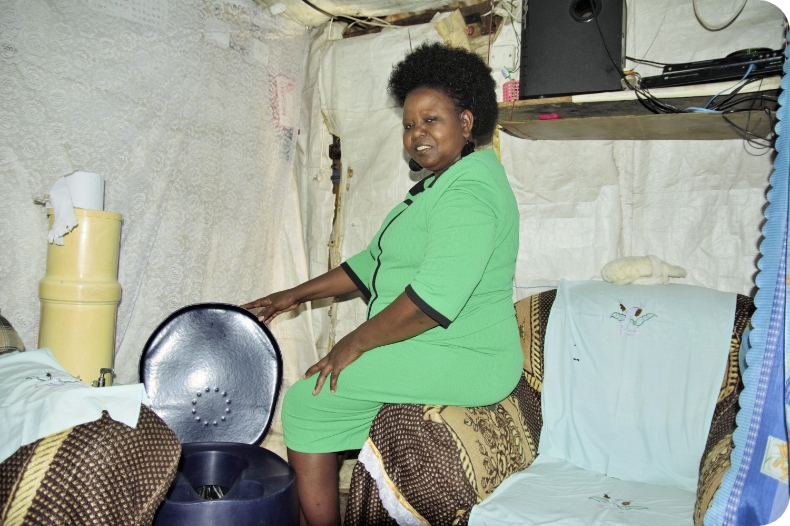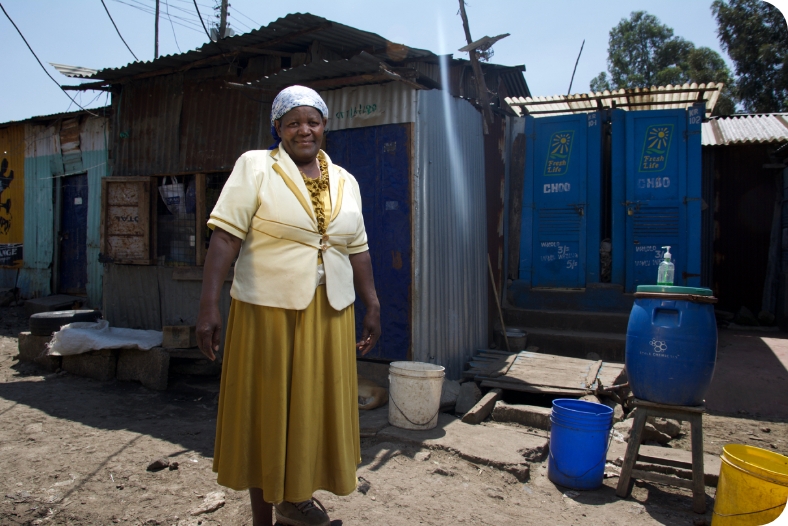Guest blog by Emma Payne- PhD student, Environmental Engineering, University of Colorado Boulder
When you think of greenhouse gas (GHG) emissions, you might think of highways crowded with gas-guzzling cars or large fossil fuel power plants pumping carbon dioxide and other GHGs into the atmosphere. But one significant, yet often overlooked, contributor to GHG emissions is sanitation.
Authors of a study conducted in Kampala, Uganda, found that the sanitation value chain – including waste collection, transport, and treatment – may account for more than half of all of Kampala’s citywide GHG emissions1 . Furthermore, the current methods for calculating GHG emissions from sanitation may underestimate emissions by up to one third, meaning that the problem may be much larger than we currently recognize .
To add to the challenge, emissions from sanitation are expected to increase in coming years. As of 2020, approximately 3.6 billion people worldwide still lack access to safely managed sanitation2 , and to meet UN Sustainable Development Goal 6 (universal access to water and sanitation for all by 2030), access to safely managed sanitation must increase drastically over the next several years. If all of these individuals will only have access to “status quo” sanitation options, then sanitation-related emissions are bound to increase. The sanitation sector is thus faced with a critical challenge: how do we increase access to safe and equitable sanitation for 3.6 billion people without emitting additional GHGs and adding to the climate crisis?
Non-sewered sanitation (NSS) systems such as improved pit latrines and septic tanks are often considered viable solutions to increase sanitation access in areas where sewered infrastructure is infeasible or impractical. However, these approaches can actually be worse than sewers from a climate perspective3 . In fact, pit latrines, open sewers, and primary wastewater treatment are some of the worst offenders as it relates to GHG emissions3.
In wet, stagnant environments with minimal air exchange, such as pit latrines and stabilization ponds, bacteria decompose fecal sludge to produce methane (CH4) and nitrous oxide (N2O), two extremely potent GHGs. The global warming potential of methane and nitrous oxide are 25 and 273, respectively, meaning that CH4 and N2O are 25 and 273 times stronger greenhouse gasses than carbon dioxide, so emitting even a little CH4 and N2O can have a very harmful climate impact. It is estimated that septic tanks and latrines emit 377 Tg of methane annually, accounting for around 2.7% of all human-caused CH4 emissions globally4 . In India, it is expected that



national annual GHG emissions will increase by 7% if pit latrines alone are relied upon to close the sanitation access gap5 . Given the urgency of addressing climate change and international commitments to cut carbon emissions, the sanitation sector is in need of more climate-friendly solutions.
Container-based sanitation (CBS) is one such solution. CBS is a model whereby waste is collected in waterless, and at times urine-diverting, toilets. The sealable containers from the toilets are collected and replaced with clean, empty containers daily or a few times per week. Full containers are then transported to a central location for treatment or disposal. Because the waste remains dry and spends little time between containment and treatment, aerobic (i.e. oxygen-rich) conditions are maintained in the containers. This is key to reducing GHG emissions, as anaerobic (i.e. oxygen-poor) conditions, which are often present in pit latrines or conventional wastewater treatment such as stabilization ponds, lead to the production of methane and nitrous oxide.
Beyond averting the production of these powerful GHGs, CBS also provides opportunities for waste valorization, as the collected fecal sludge can be recycled and turned into useful byproducts such as organic fertilizer, animal feed, or biomass briquettes. Furthermore, the byproducts themselves have additional climate benefits, as they replace more carbon-intensive alternatives, such as organic fertilizer replacing chemical fertilizer and biomass briquettes replacing fossil fuels. It is estimated that if CBS service providers served 10% of the 1 billion people living in urban settlements globally, up to 1.3 Tg of CO2 equivalent could be prevented6
In Nairobi, Kenya, Fresh Life deploys CBS technology at scale, to over 135,000 residents of informal settlements. Fresh Life collects fecal sludge from CBS toilets and transports the waste to Regen Organics, its partner under the Sanergy Collaborative, for treatment at their manufacturing plant. At this facility, a circular economy approach is employed wherein the waste is aerobically processed and turned into byproducts such as insect-based protein for animal feed, organic fertilizer, and biomass briquettes. In 2020, the carbon offset potential for the entire value chain deployed by the Sanergy Collaborative in Nairobi was calculated to be 19,000 tonnes of CO2 equivalent per year6 . This means that at 2020 operating volumes, Fresh Life and Regen Organics prevented 19,000 tonnes of CO2 from being added to the atmosphere by treating sanitation, agriculture, and food waste, which is equivalent to removing 4,200 cars from the road! The magnitude of this carbon offset is only slated to grow as the Sanergy Collaborative scales across Kenya and other African countries.
This climate benefit – beyond being valuable and impressive in and of itself – can be quantified and monetized through carbon credits. Carbon credits are a type of climate financing mechanism which allows environmentally-friendly organizations to earn additional revenue on the basis oftheir positive climate impact by measuring and selling the climate benefits or reduction in GHG emissions that they generate.
Currently, Fresh Life and Regen Organics are pursuing carbon credits for their GHG-reducing operations. The lessons learned from their carbon credit project registrations will pave the way for other CBS service providers and/or circular economy-based waste treatment organizations to register carbon projects of their own, thereby funding expanded services and ultimately moving us towards a more climate-friendly sanitation sector.
1 Johnson, J., Zakaria, F., Nkurunziza, A.G., Way, C., Camargo-Valero, M.A., Evans, B. (2022). Whole-system analysis reveals high greenhouse-gas emissions from citywide sanitation in Kampala, Uganda. Communications Earth & Environment. 3(1), 1-10.
2Progress on household drinking water, sanitation and hygiene 2000-2020: five years into the SDGs. Geneva: World Health Organization (WHO) and the United Nations Children’s Fund (UNICEF), 2021. License: CC BY-NC-SA 3.0 IGO
3Henderson, A., Cashman, S., Bartram, D. (2022) Assessing the Greenhouse Gas Emissions and Other Impacts of Sewage Management: Summary Report for Policymakers. ERG.
4 Cheng, S., Long, J., Evans, B., Zhan, Z., Li, T., Chen, C., Mang, H.-P., & Li, Z. (2022). Non-negligible greenhouse gas emissions from non-sewered sanitation systems: A meta-analysis. Environmental Research, 212, 113468. https://doi.org/10.1016/j.envres.2022.113468
5Kulak, M.; Shah, N.; Sawant, N.; Unger, N.; King, H. (2017) Technology Choices in Scaling up Sanitation Can Significantly Affect Greenhouse Gas Emissions and the Fertiliser Gap in India. Journal of Water, Sanitation and Hygiene for Development, 7 (3), 466–476
6Trondsen, L.H., Bischak, E., McNicol, G., Reid., M., Ryals, R., Russel, K. (2019) Calculating the Climate Change Mitigation Potential of Container-Based Sanitation Systems [Poster]. UNC Water and Health Conference, October 2019, Chapel Hill, NC.



